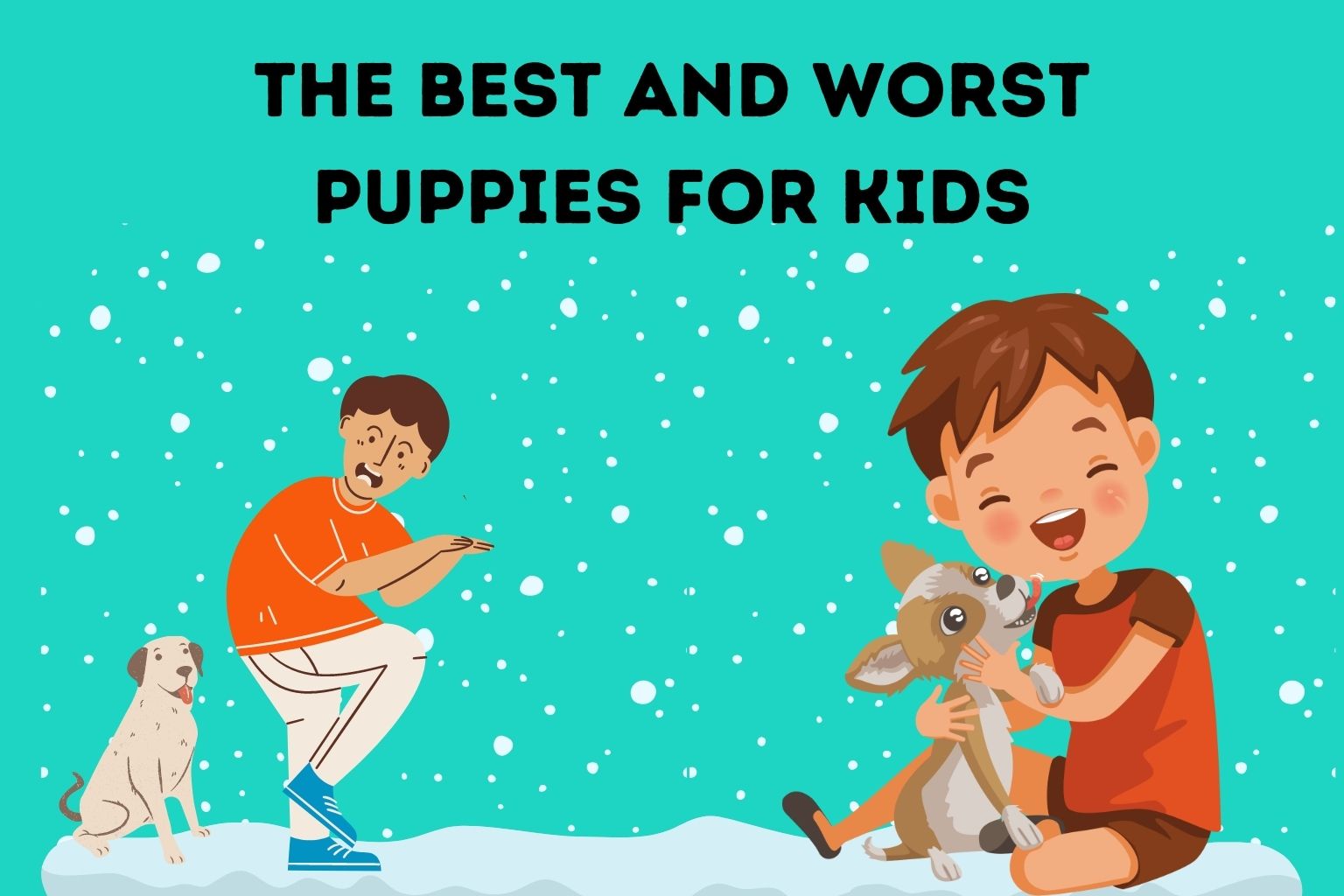So, your kid wants a puppy. And you’re okay with that. You’ve thought about it, and you’ve realized that, no matter how many times you tell your kids “The dog is your responsibility,” you’re going to end up being the one who is feeding and watering and walking. Still, you love your kids, and you want them to have the experience of growing up with a dog.
Now, your biggest decision is settling on a breed. So, what are the best pups for kids? Is there really a “best breed” or is this something that’s subjective?
A Story for You
You know how I love to tell you stories about my adventures with dogs and dog people, so here’s another one.
A couple of days ago, someone wandered into the dog park without a dog. The last time this happened, it was Al, coming down to tell us that his Saint Bernard, Hannah, had passed, so as you can imagine, much of the time when someone shows up solo, it’s not a good thing.
This was a bit different, though. It was a woman who was thinking about getting her daughter a dog for being promoted from kindergarten into Grade One. She was wondering if any of us had suggestions as to what are the best pups for kids, and which might be better avoided. So, once again, we had a “Go ask Ash” moment.
I have to say, it wasn’t really a question I wanted to answer. There are so many variables involved in choosing pups for kids – the age of the child, the child’s temperament, the size of the dog, the willingness on the part of the adults in the household to train and socialize the dog – I could go on and on. Of course, the temperament of the dog is very important as well, but I think temperament issues most of the time have more to do with the individual dog than with the breed.
I promised that I’d do some research and try to come back with some suggestions.
The Research
You won’t find a link here to any site that purports to have the answers when it comes to choosing puppies for kids. This is because so many of them are based on nothing more than opinion or personal prejudice. Several also advise against certain breeds simply because of their reputation or their size. Essentially, what I did when researching this post was look at literally dozens of sites, and try to identify commonalities.
So, this is by no means definitive, and it also doesn’t necessarily represent the breeds that I would personally consider to be suitable for kids, or unsuitable. If I start adding or deleting breeds, then I’m just as guilty as everyone else out there of allowing their personal opinions to taint what they post.
Consider this as nothing more than a collection of other people’s opinions. When a breed came up over and over as being either “best” or “worst,” I added it to the list. Then I narrowed it down to half a dozen of each to give you the breeds that most people seem to feel strongly about one way or another when it comes to how good they are with children.
Here they are.
Six Best Puppies for Kids
1. Beagle
The Beagle was originally bred for hunting, and many people still use these dogs to hunt rabbits and other small game. The breed is also very common as a companion dog, and has a loving nature and a willingness to play, so that makes the Beagle one of the best puppies for kids. If you choose a Beagle for your child, they’ll be fast friends for a long time, since the Beagle is long-lived in comparison with many other breeds, usually enjoying a lifespan of 10-14 years.
Beagles can be a bit stubborn, but they’re generally cooperative and therefore a good choice for the novice dog owner. Training is essential, though, and you need to be firm and consistent when working with a Beagle.
You’ll also have to train your child – Beagles don’t appreciate ear-pulling and other rough handling, so your child needs to be gentle. Another thing to keep in mind is that Beagles can be gluttons, and thus can be prone to obesity, so you’ll want to feed on a schedule – this isn’t a breed that should be free-fed. What it also means is that Beagles can be protective of their food, so make sure that your child knows not to disturb the dog when he’s eating.
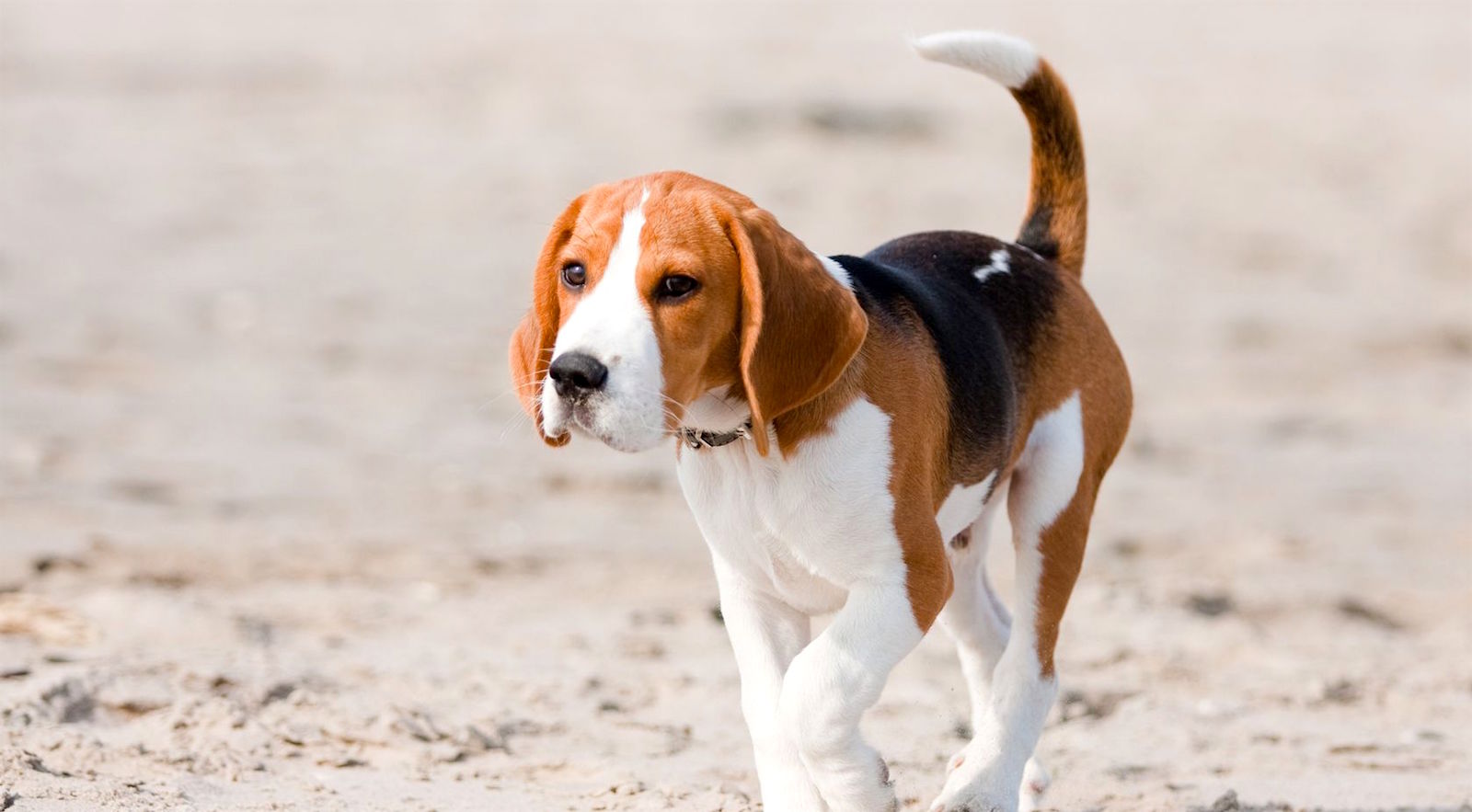
As to exercise, a Beagle enjoys a lot of activity, so if your child likes to be outdoors a lot, the Beagle will be more than happy to play. When walking your Beagle, it’s a good idea to keep him on leash, since if he catches the scent of something interesting, he’ll take off. Usually, the dog will find his way home, but on the off chance that he doesn’t, that’s not something you want your kid to have to deal with.
Grooming a Beagle is easy – usually a brushing once a week will suffice, although you can brush more frequently. It’s a good way of bonding with your dog.
Generally speaking, Beagles are very pleasing dogs. They’re intelligent, easy to care for, eager to please and typically have no temperament issues. They won’t tolerate obnoxious children well, though, so as I’ve already suggested, it’s just as important to train your kids as it is to train your dog.
2. Golden Retriever
The Golden Retriever is another of the best puppies for kids, playful, loving, cooperative, and highly intelligent. The breed is also very active, so Golden Retrievers make ideal playmates for children. The only thing to watch out for in terms of play is that the Golden Retriever is very eager to please, so even though he likes a lot of activity, if your child is also extremely active, the dog might continue playing in an effort to please the child long after he’s actually worn out.
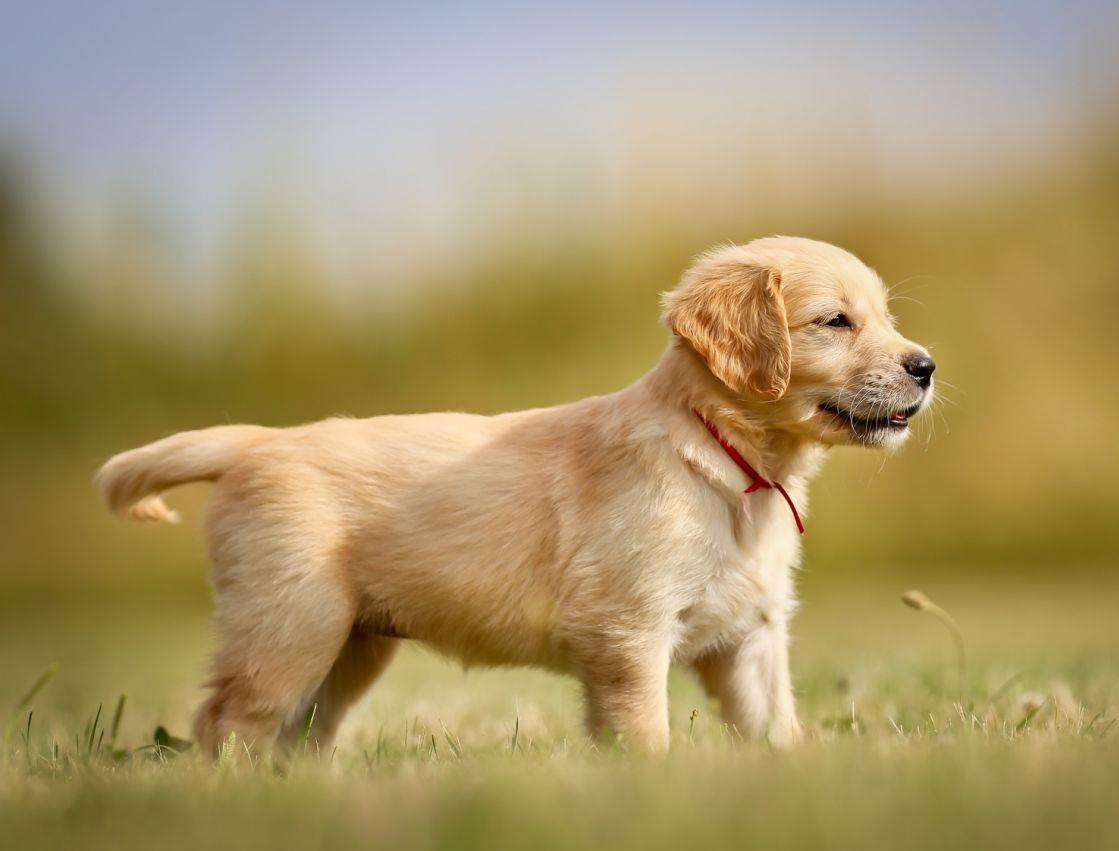
Because of the Golden Retriever’s intelligence and cooperative nature, training is easy. Accordingly, the Golden Retriever is a good choice for people who may not have a lot of experience with dogs.
Even with the long hair, it’s not all that hard to groom a Golden Retriever. Daily brushing is best, but bathe only when absolutely necessary in order to avoid drying out the skin and losing too much of the undercoat.
The Golden Retriever is another breed that will live for a relatively long time, typically reaching an age of between 10 and 12 years. This is a really good thing, because it can be very hard for a kid to reach a certain age and then have his best buddy die. If you get a puppy at the same time that you have a child, you can end up when a child is very young, having to explain the death of their dog. Usually, a Golden will live long enough that a child will be able to process the death and react appropriately. It’s never going to be easy, but it’s more bearable for an older child.
Related Content:
8 Ways to Finally Housebreak Your Puppy For Good
5 Things to Do On Puppy’s First Day Home
Is a Pekingese Puppy Right for Your Family?
3. Labrador Retriever
For the past 10 years, the Labrador Retriever has been the most popular dog in the United States, and definitely among the best puppies for kids. Labs are very tolerant, and therefore well suited to even very young children. They’re also extremely loyal, and possessed of an incredible willingness to please their humans.
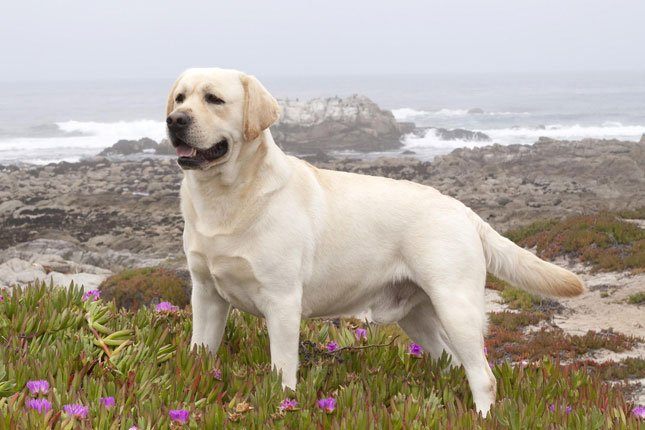
Because the Labrador is a fairly sizable dog, it’s advisable to begin training early, before the physical strength of the dog makes him less easy to handle. One issue you won’t have with a Lab is stubbornness – they’re typically quite happy to let you be the alpha in the relationship. A Lab will most of the time even allow a child to be an alpha.
Labs aren’t hard to groom, since they’re short-haired, but they do shed. A brushing once a week will usually take care of most of the excess hair. This is another breed with an undercoat, though, so bathe only if you absolutely have to.
4. Pug
These adorable little dogs are fun-loving and loyal. Because of their size, you won’t have to worry about a Pug knocking your child over, but you will have to supervise in order to be sure that your kid isn’t too rough with the dog.
Pugs can be a bit willful, so when training, it’s important to stay calm and be firm. Of course, you should never shout at any dog, but Pugs are especially sensitive, and can become nervous if you’re too loud. Use a lot of praise – a treat or two wouldn’t go amiss, either.
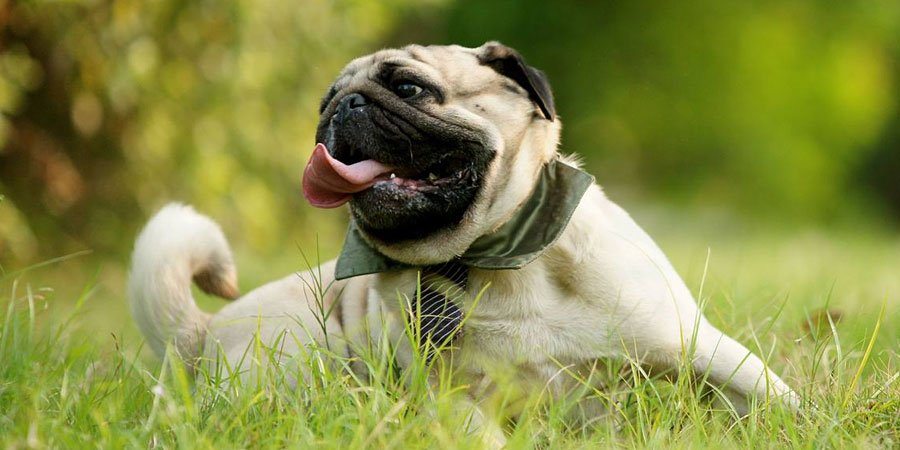
This is another situation where it’s just as important to train your child as it is to train the dog. Pugs don’t react well to yappy children, so make sure that your child knows to speak softly but firmly to the dog.
Pugs can be lazy, so regular exercise is important. For that matter, kids these days can be lazy as well, more prone to wanting to stay inside with their video games than to want to go outside and play. Kick both the dog and the kid outside!
Thanks to the short coat, twice-monthly brushing is probably good enough, although brushing more often can be quite enjoyable for both you and your dog. You will need to clean out their ears and their facial wrinkles regularly, though.
Although there can be some health problems associated with the breed (breathing issues, usually, due to the short nose), Pugs are generally healthy and can live for 12-15 years, which is a great thing if you want your kid and your dog to grow up together.
With a life span of 12 to15 years, this will be a loving pet for a long time.
5. Poodle
Many of the sites I looked at suggest the Poodle as being among the best puppies for kids. I need to emphasize, though, that this means the Standard Poodle – not the minis or the toys.
The Standard Poodle is considered to be one of the most intelligent dog breeds, as well as being loyal and patient. Another advantage is that if your child has allergies, the Poodle is also as close as you’ll ever get to a hypoallergenic dog – there’s no such thing as a dog that’s 100% hypoallergenic.
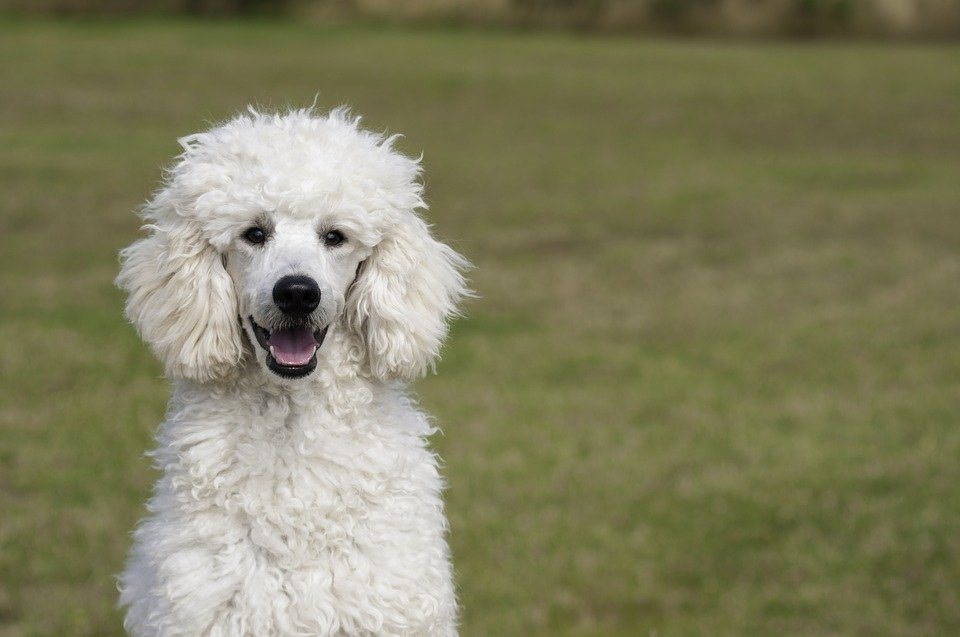
Although possessed of a very steady temperament, regular exercise is very important, otherwise you can end up with a high-strung, destructive dog. Combine that with high-strung, destructive kids, and it’s probably not a good mix. LOL!
Standard Poodles have an advantage over many other large breeds in that they’re comparatively long-lived. A Standard Poodle will be a beloved member of your family for 10-12 years.
6. Mixed Breed
By “mixed breed,” I don’t mean “designer dogs” – those yappy little things like the so-called “Chorkies,” “Puggles,” “Peke-a-Poos” and so on are actually bred for abnormally small size and typically have significant health problems (See AChorkie is a Mix, Not a Breed for more about designer dogs). I mean a dog whose ancestry can’t really be conclusively determined.
Usually mixed breeds have good temperaments, but the best way to tell how a puppy is likely to turn out is by visiting the mother and the rest of the litter. A lot of the time, these puppies are of unknown ancestry because the breeding was accidental, and the owner has no idea who the father (or fathers, since a bitch can be fertilized by more than one dog over the course of her heat) might be.
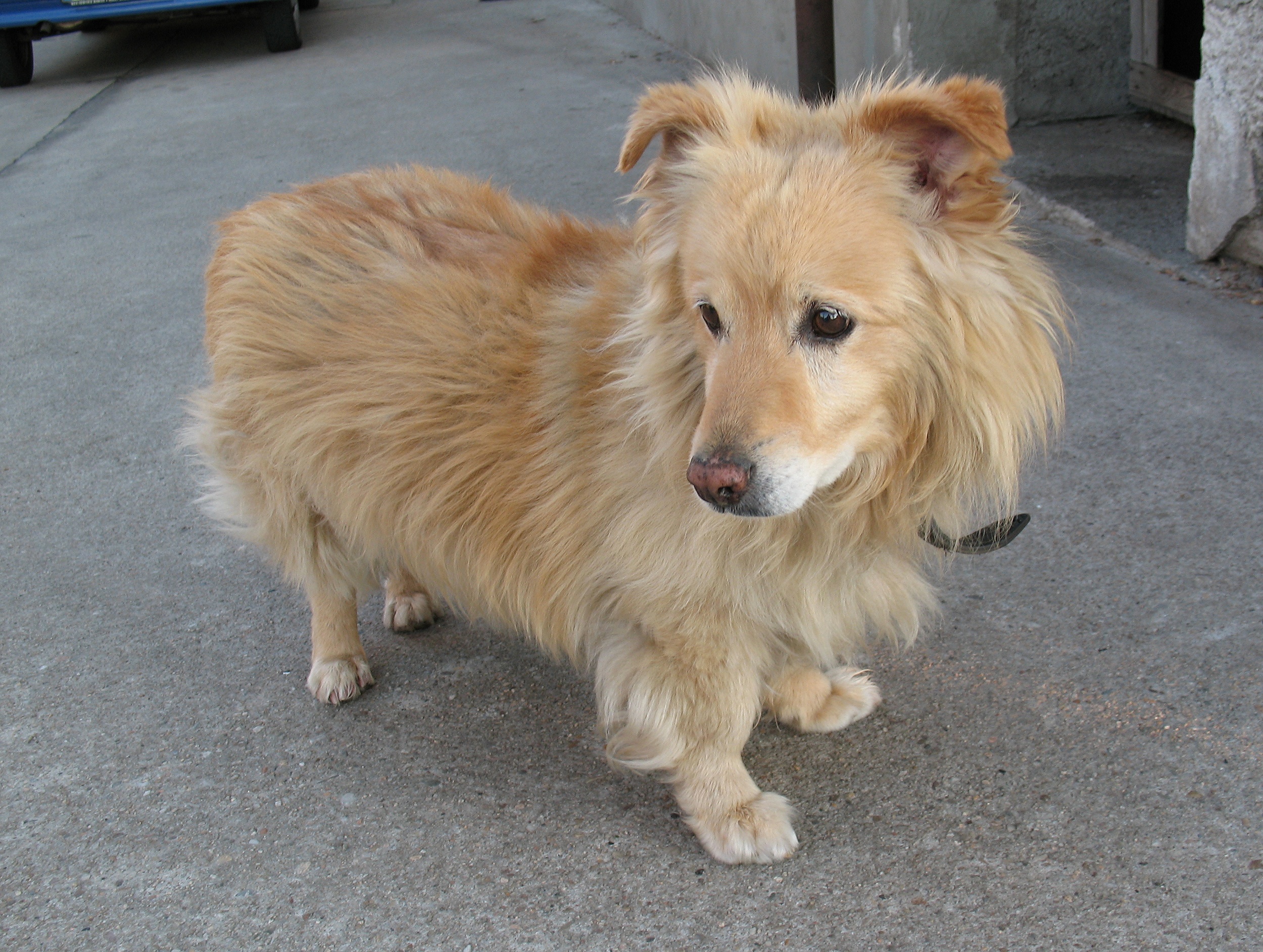
If the mother is a nice dog, chances are the puppies will take on much of her temperament. Take a look at how the puppy you’re considering behaves with the rest of the litter, though – you don’t want a bully, and you also don’t want one who’s always trying to keep his distance from his littermates.
One advantage to a mixed breed is price – you’ll probably be able to get a puppy for little or nothing, unless you’re buying into the designer breed mythology, in which case you’re just wasting your money. Also, if you choose a puppy from a shelter, the puppy will usually already have been neutered or spayed.
These are the breeds that most people seem to think are the best pups for kids. Now, let’s take a look at the other side of the coin.
Five Worst Puppies for Kids
Let me stress again that these breeds are being presented only because of a general consensus of opinion. Many of these breeds will make perfectly good family pets, provided that you make sure that you’re dealing with a reputable breeder whose breeding standards include a close eye on temperament, and early socialization of the puppies. Many of the so-called “worst” puppies are on this list simply because there are so many bad breeders out there.
Here you go.
1. Dalmatian
The Dalmatian is indisputably a beautiful dog, but is prone to deafness, and deaf dogs can be easily startled and might snap. In this regard, the Dalmatian could not reasonably be considered as one of the best pups for kids. If you’re considering a Dalmatian, ask the breeder if there’s any history of deafness in any of their dogs, or if they know of deafness in puppies out of previous litters. It also wouldn’t hurt to have your vet take a look at the puppy.
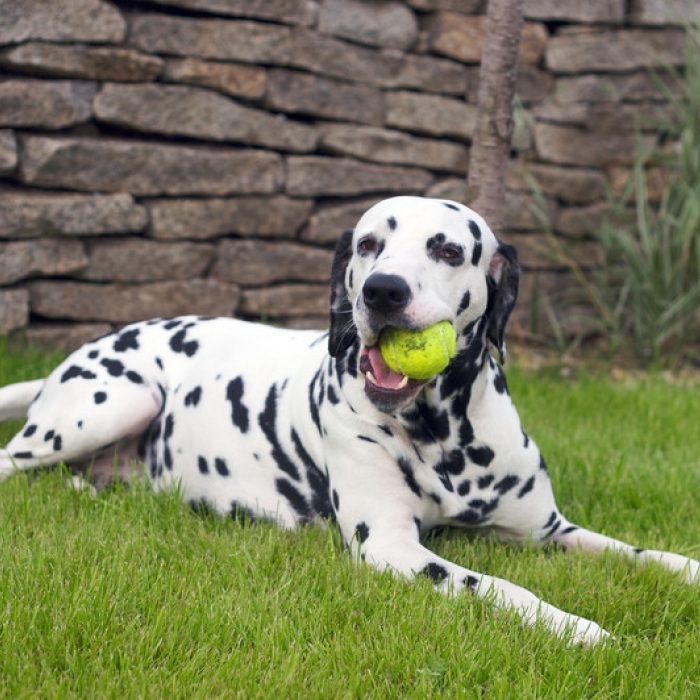
Another problem with the Dalmatian is that over-breeding has led, in many instances, to aggression. Back when the movie, “101 Dalmatians” came out, it seemed as though everybody wanted one of these dogs, so more and more of them were bred – simple supply and demand. Too much breeding, too many Dalmatians, and not enough care and control throughout the breeding process – too many irresponsible breeders, in other words.
It can take several generations to breed out aggression, once it’s been bred in. Accordingly, the Dalmatian is not usually to considered to be one of the best pups for kids.
2. Chihuahua
Here again, you can encounter temperament issues. Chihuahuas can be very territorial, and have been known to snap even at adults in the home if they don’t get their own way. The breed can also be nervous, and again, that translates as a potential for nipping.
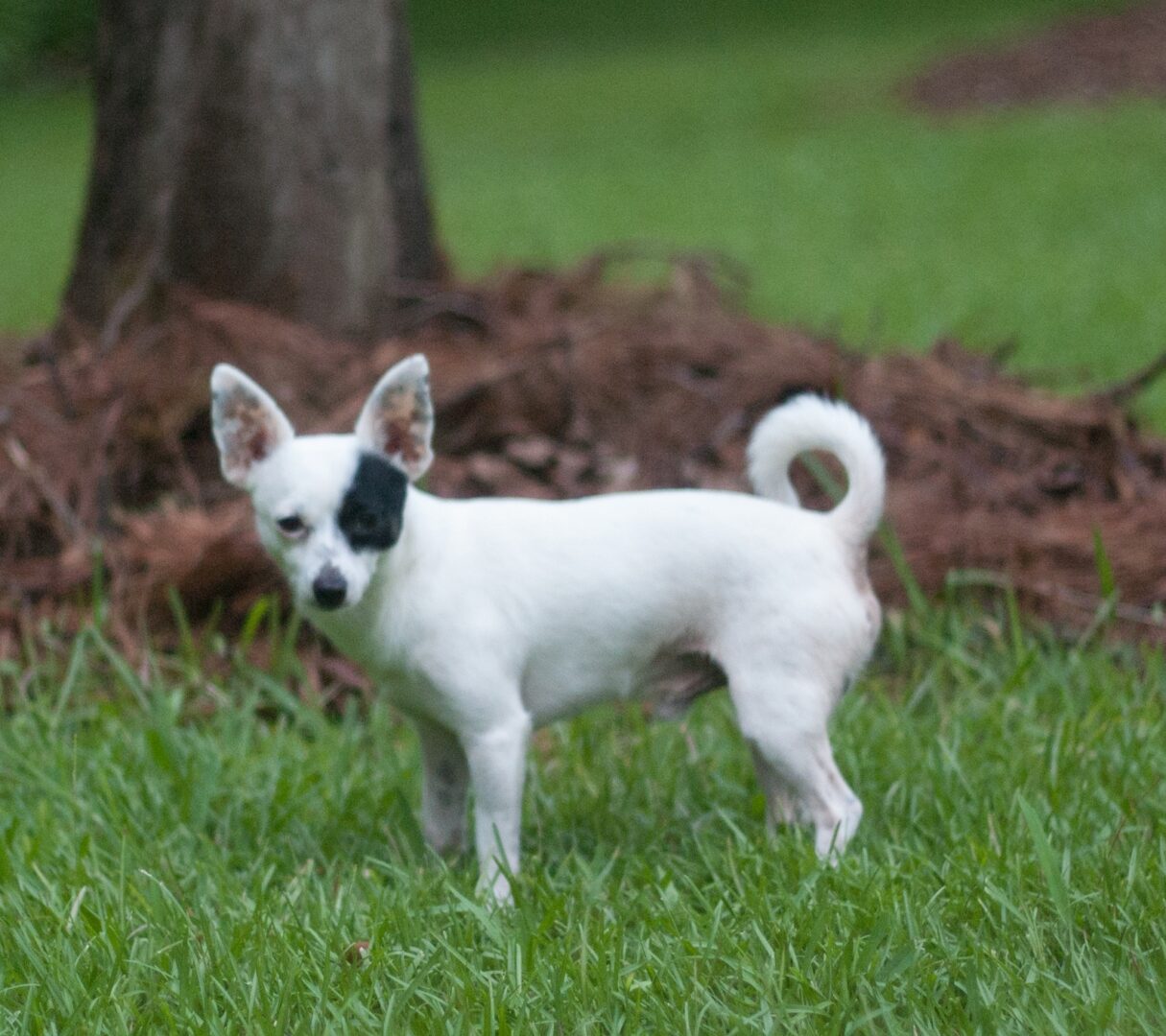
The other problem with Chihuahuas is that they’re small dogs, usually weighing no more than 7 pounds. There’s probably a greater likelihood of a Chihuahua being seriously hurt by a child than the other way around. Even a fairly small child can roll over in bed and crush a Chihuahua, or accidentally hurt the dog during play.
3. Pit Bull Types
Although there are a few people out there who simply have a prejudice against Pit Bull type dogs, on most of the sites I investigated, the prevailing belief seems to be that problems with these dogs are generally due to bad breeding. Dominance can also be an issue.

It’s hard to get past the bad breeding, though. What humans have done to Pit Bull type dogs in recent decades has led to breeds like the American Staffordshire Terrier (which was once known as the “Nanny Dog” because of its kind nature and tolerance of children) getting a bad reputation. I’m not saying never consider a Pit Bull type, but carefully observe the parents and the puppies for any signs that might indicate temperament issues.
The issue here is the reverse of the child/Chihuahua situation. In the former, a child could hurt the dog simply by virtue of being the larger one in the equation. In the latter, the dog could hurt the child simply because of its size.
4. Rottweiler
Despite its reputation, the Rottweiler is no more likely to bite than any other breed of dog, and in fact less likely to bite than many breeds. Of course, if a Rottweiler does bite, there’s going to be significant damage.
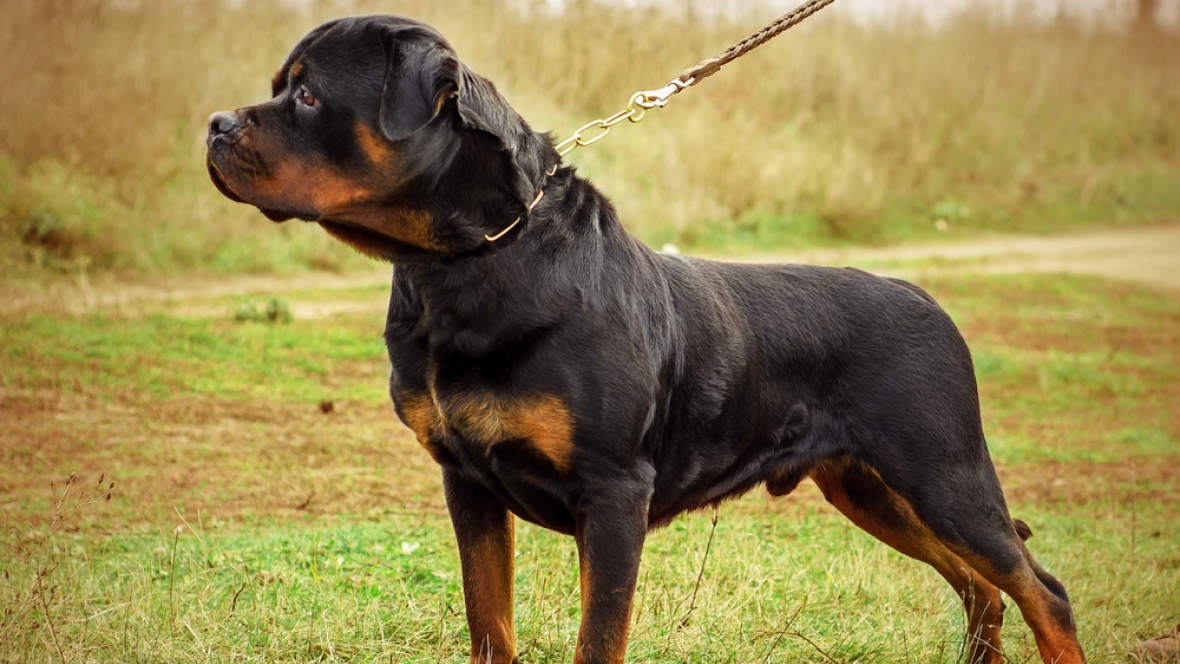
My friend Neila breeds Rotties, and she often places puppies in homes with children. She’s never had a report of any problem, and often hears from owners who tell her things like, “The dog you sold me is my kid’s best friend.” Neila breeds for good temperament, so if you’re considering a Rottweiler, make sure that the breeder you’re working with does the same.
I can’t overstate here how important it is to vet the breeder. Make sure that the breeder is mating dogs with an eye toward temperament, and not breeding any dog whose temperament is the least bit in doubt. Don’t settle for “Well, it seems like he’s a nice dog.” Make sure that there are no temperament issues. A well-bred Rott can be one of the best pups for kids. A Rott bred from stock whose temperament could be an issue is a potential menace.
5. Chow Chow
Chow Chows are gorgeous dogs, but they are very strong-willed. They can also be quick-tempered, and will not tolerate rough handling. Chow Chows are not well-suited to novice owners, and often respond best to professional training. Unless you’re very experienced, a Chow Chow should probably be the last breed you consider when looking for puppies for kids.
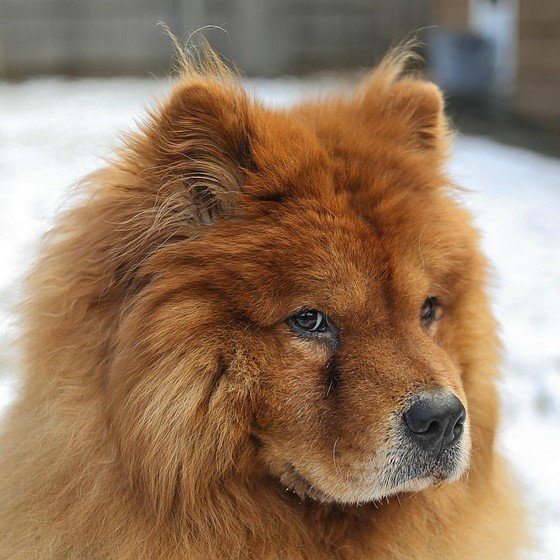
With many of these “worst” breeds, the problem is with bad breeding, so don’t necessarily write them off – just make sure to see the mother (and the father if possible), and choose a reputable breeder.
10 Things to Think About
If you’re looking for a puppy for your kids, you want to make the right decision. Here are ten things you should think about.
1. What kind of dog does my kid want?
This is more important than you might think. Most kids don’t actually just say “I want a dog.” They usually have some idea as to what type of dog they want. If you have a really active kid, don’t stick him with a lazy dog like an English Mastiff or a Pug. If your kid wants to play hard and long with a dog, a better choice might be a Golden Retriever, a Rottweiler, or a German Shepherd.
2. Am I ready to be the primary caretaker?
Look, let’s be realistic. No matter how much you tell your kid, “This is your dog and you have to look after him,” chances are that you are going to end up feeding, walking, and… well, you get the idea. The issue here is not so much what pups are best for kids, but what pup is going to be easiest for you to take care of, because, realistically, your kid is not going to do it.
3. And even if the kid is the primary caretaker…
Well, what happens when your kid grows up and leaves home? Let’s imagine that you have the most perfect kid in the world and he actually does take care of the dog. What happens when he leaves home? Are you going to be prepared to take care of his dog?
Listen, the dog didn’t ask for his kid to go away to university. What are you gonna do, Mom? Are you ready to step up to the plate and look after the dog? You could end up having to take care of the dog for years after your child leaves the family home – are you ready for that?
4. Is money a factor?
There are a lot of people who buy dogs for their kids, or for themselves, only to discover that there’s a huge financial investment involved. Are you financially able to make sure that the dog gets his shots and his twice-annual checkups? What if something really bad happens? If the dog gets hit by a car or develops an illness, are you ready and willing to pay the vet bills? You’d do it for a human, wouldn’t you? Are you ready to do it for a dog?
5. What can you do if you’re hit with a huge vet bill?
This is definitely something that you might need to consider. A big vet bill can definitely be a problem, but you have to ask yourself what price you’re going to put on love. Your options might not be all that desirable – you may have to consider maxing out your credit card, or getting a loan. But this is your DOG you’re thinking about, so ask yourself this – if it was a human, would I care about the cost? Ask yourself how you’re going to feel if you let your dog die because you don’t feel as though you can scrape up the money – and then scrape it up! Ask yourself how much your dog means to you, and proceed accordingly.
6. My daughter wants a Bull Mastiff, and my son wants a Pomeranian. What do I do?
Get two dogs.
7. I want to get my kid a dog, but I’m worried that he’ll be sad when the dog dies?
This can be a problem. And of course your kid will be sad when his dog dies. However, a kid can also be very sad over not having a dog in his or her life. I think that most kids will understand the concept of it being better to have loved and lost than never to have loved at all. Get your kid a dog. Of course he’ll be sad when the dog dies, but that’s life. Trust your child to be strong when the time comes.
8. What can I tell my child when his dog dies?
This I s a hard one. A lot of the time, people make the mistake of telling their kids that the dog went to sleep and didn’t wake up. Then the child wonders if he or she will some day go to sleep and not wake up. A better course of action is to tell the child that the dog’s body didn’t work right any more, and he died. For more on this, see my post, Explaining a Dog’s Death to Your Child.
9. Is it really a good idea to get a child a dog, knowing that the child might outlive the dog?
Of course it is. Give your kid a bit of credit – kids know that you love and lose. Perhaps your child has lost a grandparent, and understands death. Even if your child has never experienced death, it’s still a learning experience. Let him grieve for his dog, and move on. Maybe this means getting another dog. Maybe it just means staying in his room and crying and getting past it. Either way, assume that your child has a certain level of strength, and will be able to move on. Give the kid some credit.
10. Back to the best pups for kids, what do you recommend?
I recommend the dog that the kid wants. If his heart tells him that it’s a Rottie, get him one. If he wants a Toy Poodle, that’s what you get. This is going to be a lifetime thing, and your kid is going to bond hard and fast to that dog. Unless you have a really good reason to veto a particular breed, let your child have the dog that speaks to his heart.
So, are there any bad pups for kids? No. Generally speaking, there are no “bad dogs,” just bad breeders and incompetent owners. A badly bred, poorly socialized Lab is going to be just as likely to bite as any of the breeds listed here as “worst.” So the main thing to consider when shopping around for puppies for kids is the history of the parents, and that of the breeder as well. And what your kid wants –that’s what’s most important. If your kid has an affinity for a particular breed, then that’s the breed of dog that you should get for that kid.
Related Content:
8 Ways to Finally Housebreak Your Puppy For Good
5 Things to Do On Puppy’s First Day Home
Is a Pekingese Puppy Right for Your Family?
The Final Word
The best pups for kids are quite simply, the ones that the kid wants. If your little girl is saying to you “I want a Rottweiler,” or your boy is saying “I just loooovvvvveeee Golden Retrievers,” then make the choice accordingly. There are no bad dog breeds, and if your child is stuck on one particular breed, go for it.
Sometimes children express an affinity for a particular breed, and that’s fine. Just make sure that the breed fits into your household. Most dogs will adapt very nicely regardless of breed. Almost without exception, any dog breed will fit into any household. It doesn’t matter if it’s a Pug, or a German Shepherd, or a Rottweiler, or a Pomeranian, or whatever – any dog will adapt to any household.
Listen to your kid. Let him or her tell you what type of do he or she wants. Then get the dog, train it effectively and socialize it. Any dog, of any breed can be a good companion.

